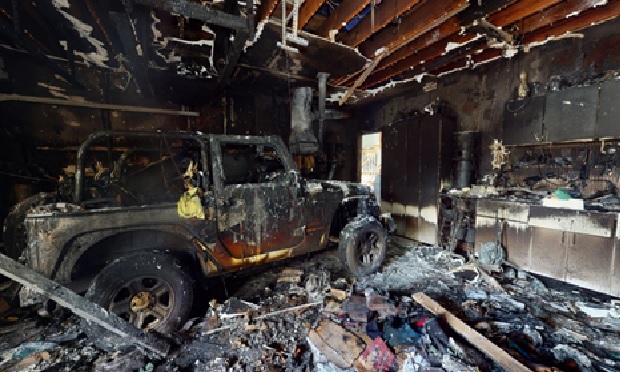 Garage fires present extremely hazardous conditions. (Photo: Sean Scott)
Garage fires present extremely hazardous conditions. (Photo: Sean Scott)
According to the National Fire Protection Association, there were approximately 490,500 structure fires reported in the United States in 2020, with an average of a home structure fire reported every 89 seconds. The cost in 2020 (not including wildfires) was over $12.1 billion in damages. You can imagine that this frequency of fires creates a tremendous volume of property damage claims for insurance companies and their field adjusters.
Recommended For You
Want to continue reading?
Become a Free PropertyCasualty360 Digital Reader
Your access to unlimited PropertyCasualty360 content isn’t changing.
Once you are an ALM digital member, you’ll receive:
- Breaking insurance news and analysis, on-site and via our newsletters and custom alerts
- Weekly Insurance Speak podcast featuring exclusive interviews with industry leaders
- Educational webcasts, white papers, and ebooks from industry thought leaders
- Critical converage of the employee benefits and financial advisory markets on our other ALM sites, BenefitsPRO and ThinkAdvisor
Already have an account? Sign In Now
© Touchpoint Markets, All Rights Reserved. Request academic re-use from www.copyright.com. All other uses, submit a request to [email protected]. For more inforrmation visit Asset & Logo Licensing.







